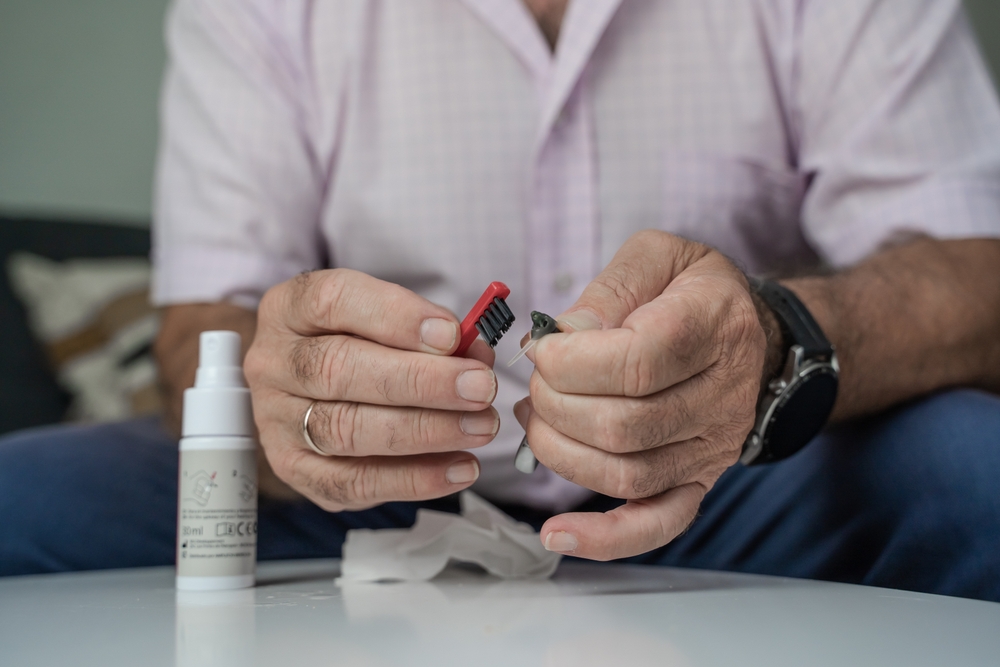
For individuals with hearing loss, hearing aids are crucial for better hearing and general quality of life. They do, however, need to be routinely cleaned and properly maintained just like any technology does. The lifespan of your device can be considerably lengthened by regular cleaning which will also allow you to hear more clearly. Let’s explore some measures you can take to maintain your hearing aids.
Keeping your hearing aids clean and getting professional tune-ups
You should clean your hearing aids at least once every week. A quick cleaning routine doesn’t take much time but is really helpful in preserving sound quality and device longevity.
In addition to your regular at-home care, periodic professional maintenance by a hearing specialist is recommended. Think of it like visiting the dentist, while brushing and flossing are helpful, professional cleanings ensure the best results. A deep clean by a specialist is recommended every six months or so. This not only keeps them in prime condition but also helps identify any potential issues early.
Basic everyday care tips
Taking a few simple precautions can greatly enhance the lifespan and performance of your hearing aids. Consider the following tips to avoid common obstacles:
- Keep Them Free of Moisture and Chemicals: Your hearing aids can be compromised by excessive moisture. Before swimming, taking a shower, or using products like hair spray, be sure you take them out.
- Clean Before Bed: Cleaning your hearing aids at night gives them a chance to dry completely before you wear them again in the morning.
- Protect From Temperature Extremes: Avoid exposing your hearing aids to extreme weather conditions. Leave your hearing aids in the house if the weather is especially hot and humid or cold and wet outside.
- Use a Dehumidifier: Storing your hearing aids in a dehumidifier while you sleep can help keep them dry and free of moisture that could cause malfunction.
- Safe Storage: When they’re not being used, keep your hearing aids stored in a protective case or in their charger to avoid exposure to dirt or physical damage.
- Before Handling, Clean Your Hands: Skin oils and debris can impact the function of your hearing aids so be certain you clean and dry your hands before handling them.
Hearing aid care tools
You will require the right tools to effectively maintain your hearing aids. Think about investing in a hearing aid care kit, which could include the following:
- Hearing aid dryer: Dries any moisture accumulated after using the device all day.
- Microfiber cloth: An ideal tool for cleansing the outer surface of the hearing aid.
- Wax pick or loop: To delicately clear out earwax and debris from tight spaces
- Cleaning brush: For clearing away excessive wax and dust.
- Slim tube cleaner: To remove any debris lodged in the hearing aid tubes.
Your hearing specialist can direct you to the best tools and practices to keep your hearing aids in excellent condition.
Cleaning varies depending on the type of hearing aid
There are some slight differences in how you clean different types of hearing aids. Two of the main types of hearing aids are Behind-the-ear (BTE) and In-The-Ear (ITE): Here are precise cleaning instructions for each type.
Cleaning In-The-Ear (ITE) hearing aids
- Wipe the Exterior: Wipe down the whole outer surface with a microfiber cloth to clear away any residue.
- Clear the Ventilation Tube: Push a slim cleaning tool through the vent tube to ensure there’s no blockage.
- Remove Wax with a Loop: Use a wax loop or pick to thoroughly extract any remaining earwax.
- Brush Debris Away: Gently wipe away any earwax or debris from the surface of your hearing aid while holding it face down.
Cleaning Behind-The-Ear (BTE) hearing aids
- Use a Wax Pick: Use a loop pick to clear away any stubborn wax that may remain.
- Reassemble and Test: Reassemble and test your hearing aids once everything dries out.
- Soak the Ear Mold: Release any buildup on the ear molds by detaching them and soaking them in warm soapy water. Eliminate any excess moisture with a tubing blower and finish with a dry cloth.
- Clear the Tubing: Clean the exterior of the tube with a cloth after pushing a pipe cleaner through it.
- Detach the Tubing: Begin by detaching the tubing from the hearing aid itself.
- Clean the Aid: Hold the hearing aid face down and gently brush away any dirt or wax, particularly around the receiver and microphone.
- Clean the Microphone Openings: Free the microphone of debris by brushing its opening.
Proper hygiene can help you avoid infections
Outside of maintaining your devices, it’s just as important to clean your ears. Excessive accumulation of earwax can negatively impact the functionality of your hearing aid and cause your ears discomfort and potentially infection. These issues can typically be avoided by regularly cleaning your ears and hearing aids.
Schedule an appointment to get your hearing aids cleaned by a professional
If you have any questions about your hearing aids or would like to schedule a professional cleaning, reach out to us today.
Professional maintenance is key to ensuring your hearing aids continue to serve you well for years to come.